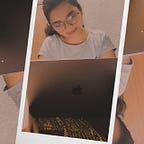Adobe Interview Experience SheCodes-Internship
Hello! I’m Bhavika Badjate, and I’d like to share my journey through the Adobe SheCodes internship application process. As a third-year student, I decided to try my luck and apply for this internship. Little did I know that it would turn out to be both exciting and more challenging than I had anticipated.
Round One:
The initial round comprised three sections:
1. Cognitive (30 Questions, 30 min, easy level): English and verbal questions (paragraph-based).
2. Technical (20 Questions, 20 min, easy level): Basic questions on C, C++, DBMS, and Operating Systems.
3. Coding (2 Questions, 20 min, easy level):
i. Program to find the greatest number among three numbers.
ii. Determining if a number is divisible by certain numbers within a given range.
Round Two:
The second round was structured similarly:
1. Cognitive (20 Questions, 20 min, easy to medium level): English and verbal questions (paragraph-based).
2. Technical (20 Questions, 20 min, easy to medium level): More basic questions on C, C++, DBMS, and Operating Systems.
3. Coding (2 Questions, 20 min, medium level): i. Finding the sum of all prime divisors of a number. ii. Calculating the sum of the largest contiguous subarray.
Gamified Round:
A gamified round followed, comprising three subsections:
1. Inductive Logical Thinking
2. Grid Challenge
3. Switch Challenge
The Switch Challenge was the most challenging, but I thoroughly enjoyed the gamified aspect of this round.
After these rounds, on November 4th, I received an email stating that I had been shortlisted for the Adobe virtual interview process based on my test scores.
I dedicated the next month to intensive preparation. However, due to COVID-related delays and the selection of many candidates from tier 1 colleges, I began to feel demotivated, thinking I lacked the necessary skills.
In December, a ray of hope emerged when I received an email stating that they would move forward with the technical interview process in January. I immediately started studying dynamic programming, trees, and other topics from the SDE Sheet. In February, while attending the Grace Hopper Conference India, I had a chance to connect with Adobe recruiters and asked them to review my interview process. They suggested I share my resume once again.
At the end of February, I received a call from the recruiter, and I scheduled my interview for March 3rd.
Round Three: Technical Interview
The interview lasted approximately 70–80 minutes. The interviewer began with introductions and a discussion about my projects and skills, which took about 5 minutes.
He then asked me to share my screen and presented the first question from the strivers SDE sheet, “Two Sum.” It was relatively easy, and I started with a brute-force solution. However, the interviewer prompted me to optimize it. I coded the optimal solution but missed some edge cases. The interviewer provided examples and asked me to dry run the code, helping me catch those edge cases.
Next, he delved into tree-related questions, focusing on binary tree zigzag traversal. My initial approach didn’t satisfy him, so he provided hints, and I explained his suggested approach, which met his expectations. Coding this solution took about 6–7 minutes.
We discussed basic questions about heaps, the internal implementation of vectors, heaps, stacks, and other related topics. He also presented a puzzle, which I found to be quite manageable.
The interview concluded with some operating system questions. While some were basic, there were a few I couldn’t answer.
Before parting ways, I asked the interviewer about Adobe’s work culture, and we had a 5–6 minute conversation beyond the interview.
Post-Interview:
I felt satisfied with my performance but waited anxiously. After 15 days, I received a reply from the recruiter. While I had hoped for a more definitive response, it was not to be. The email mentioned that Adobe had experienced an unprecedented level of interest in their internship positions. They had very few openings left and would aim to finalize their intern selections by mid-March. This uncertainty was disappointing.
Lessons Learned:
This journey taught me several valuable lessons:
1. Building connections on LinkedIn helped me discover new opportunities.
2. Enhancing my resume and LinkedIn profiles and applying to every opportunity was crucial.
3. Patience and belief in the process are essential virtues.
4. Continuous practice is key.
5. Asking interviewers about edge cases, effective communication, dry runs, and explaining intuition are vital interview skills.
In conclusion, this journey was a valuable experience, and I’ve learned a lot along the way.
